As with all direct-manipulation interactions items of interest need to be visible on the screen for example icons thumbnails or explicit interface. Assess an effect over time.

Learn How To Implement Your Participant Design In Pro Lab
This type of test is frequently used when using a pretest and posttest design but is not limited to only two time periods.

. Repeated measures design isnt only useful for taste tests but is also used in many types of experiments. Three types of experimental designs are commonly used. The between-groups factor would need to be coded in a single column as with the independent.
For example if an independent groups design requires 20 subjects per experimental group a repeated measures design may only require 20 total. In psychological and educational research repeated measures design is the best. It is a type of direct manipulation particularly useful for grouping reordering moving or resizing objectsIt works as follows.
If you use a between-subjects design you would split your sample into two groups of participants. For example if there are 10 participants will all 10 participants take part in both groups eg repeated measures or will the participants be split in half and take part in only one group each. A mixed factorial design involves two or more independent variables of which at least one is a within-subjects repeated measures factor and at least one is a between-groups factor.
In the simplest case there will be one between-groups factor and one within-subjects factor. Draganddrop has been around since the dawn of GUIs and is familiar to most users. A within-subjects ANOVA is also called a repeated measures ANOVA.
The repeated measures ANOVA can be used when examining for differences over two or more time periods. Between-subjects versus within-subjects design Youre planning to study whether taking a nap your independent variable after a learning session can improve test scores your dependent variable. Independent measures design also known as between-groups is an.
This design is usually used in place of or in some cases in conjunction with the within-subject design which applies the same variations of conditions to each subject to observe the reactions. Fewer subjects need to be recruited trained and compensated to complete an entire experiment. In the design of experiments a between-group design is an experiment that has two or more groups of subjects each being tested by a different testing factor simultaneously.
For example this analysis would be appropriate if the researcher seeks to. You can use either a between-subjects or a within-subjects design. In a between-subjects design also known as an independent measures design or classic ANOVA design individuals receive only one of the possible levels of an experimental treatment.
An experimental design where treatments arent randomly assigned is called a quasi-experimental design. Repeated measures designs can track an effect overtime such as the learning curve.

Within Subjects Design Explanation Approaches Examples

Within Subject Design Repeated Measures Design
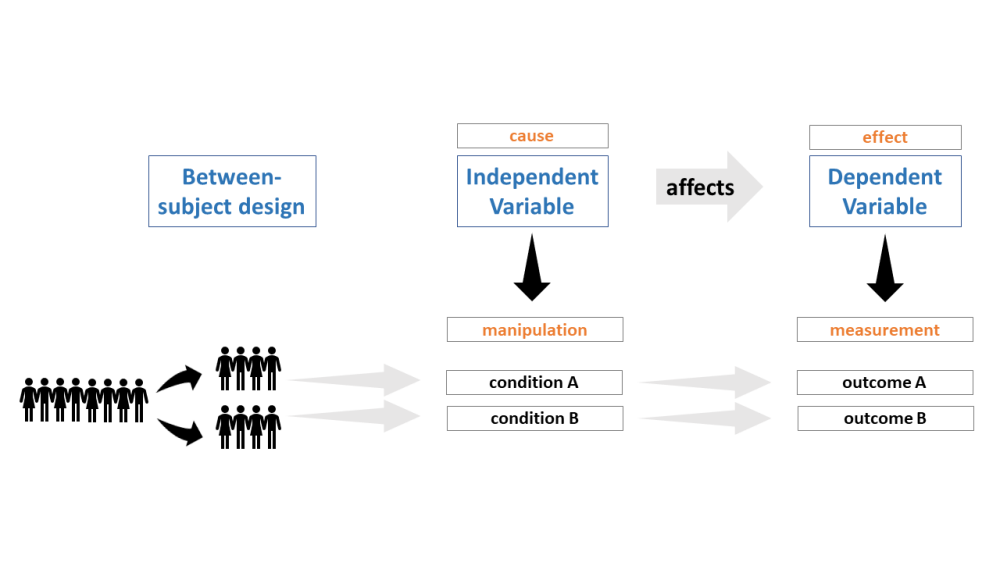
Learn How To Implement Your Participant Design In Pro Lab
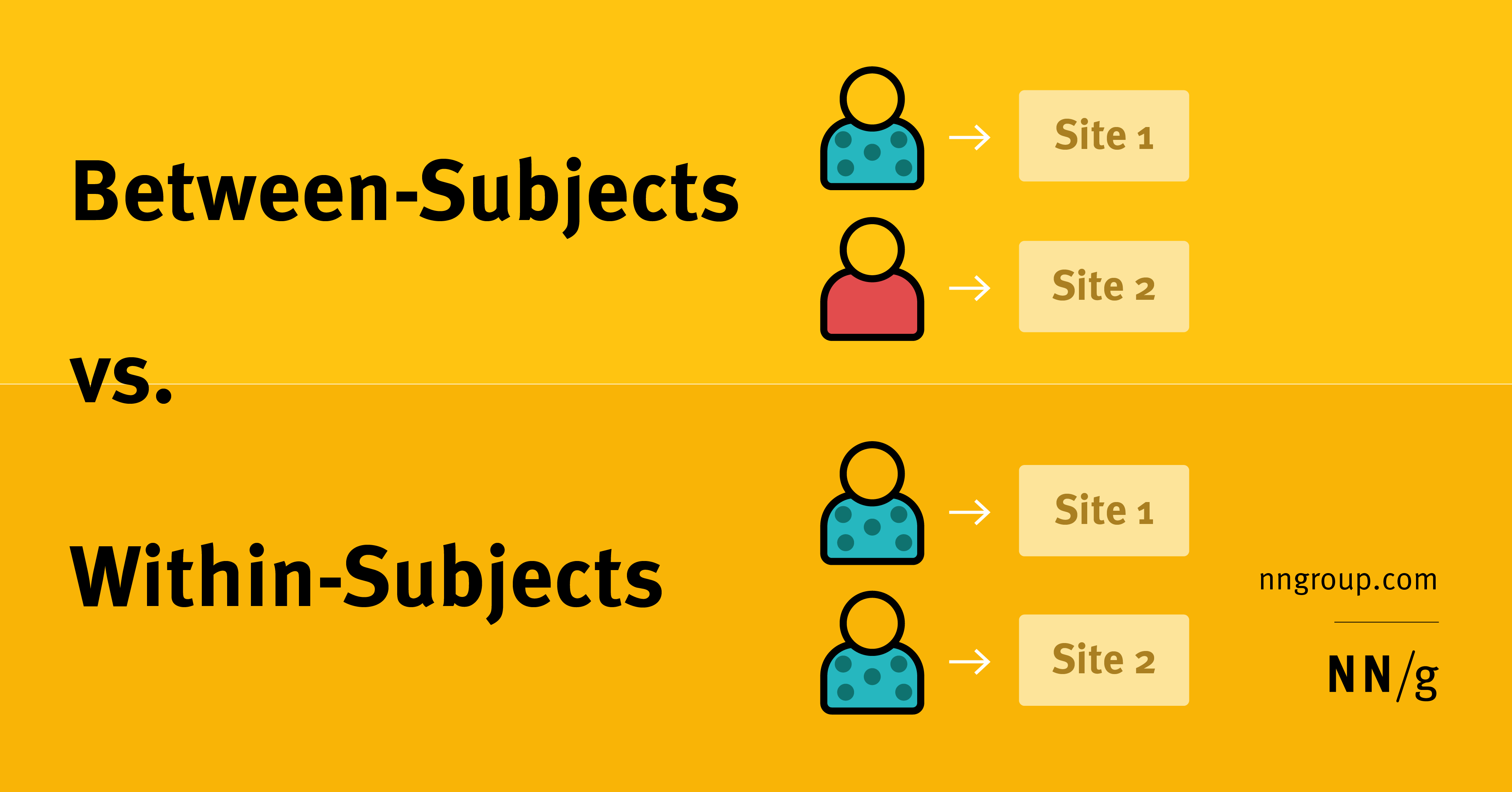
Between Subjects Vs Within Subjects Study Design
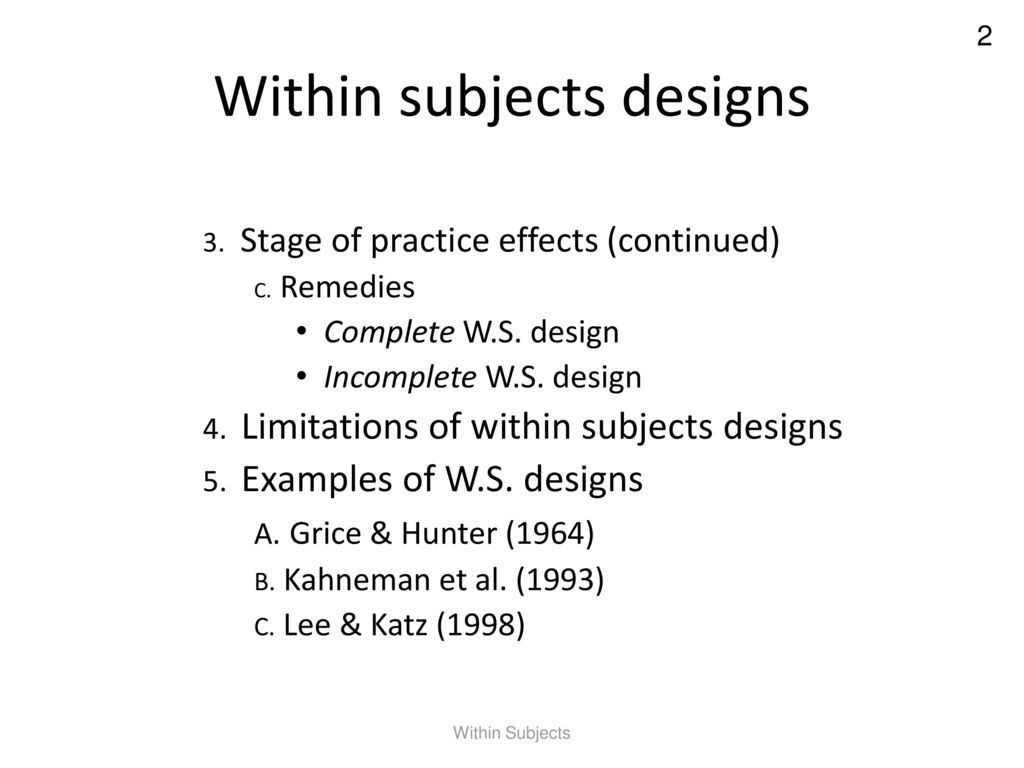
Within Subjects Designs Ppt Download

Within Subjects Repeated Measures Design Experimental Psychology Jove
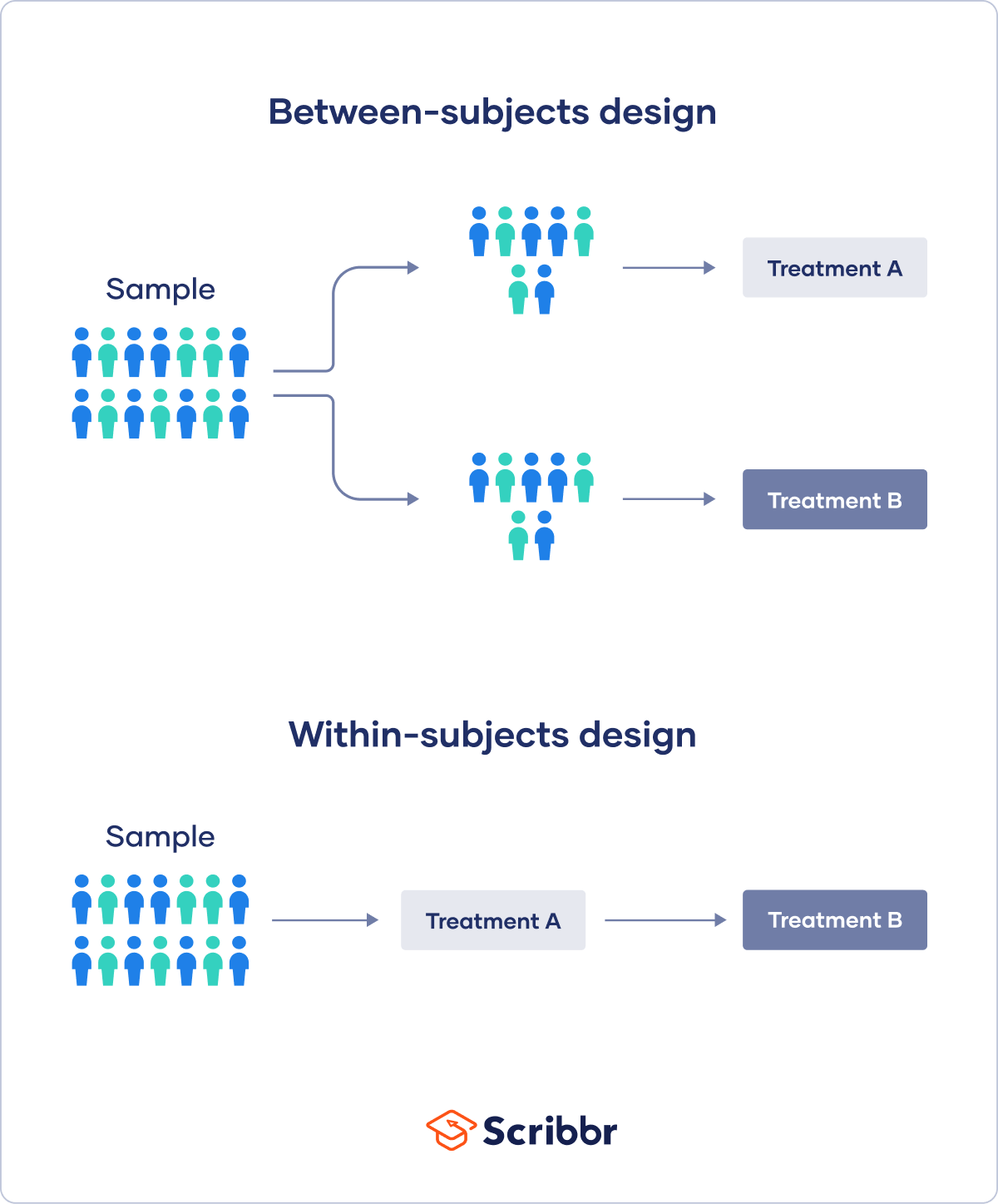
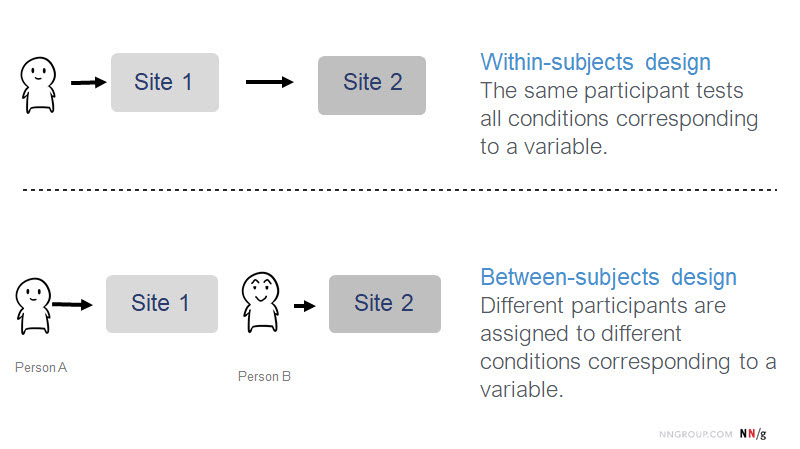
0 comments
Post a Comment